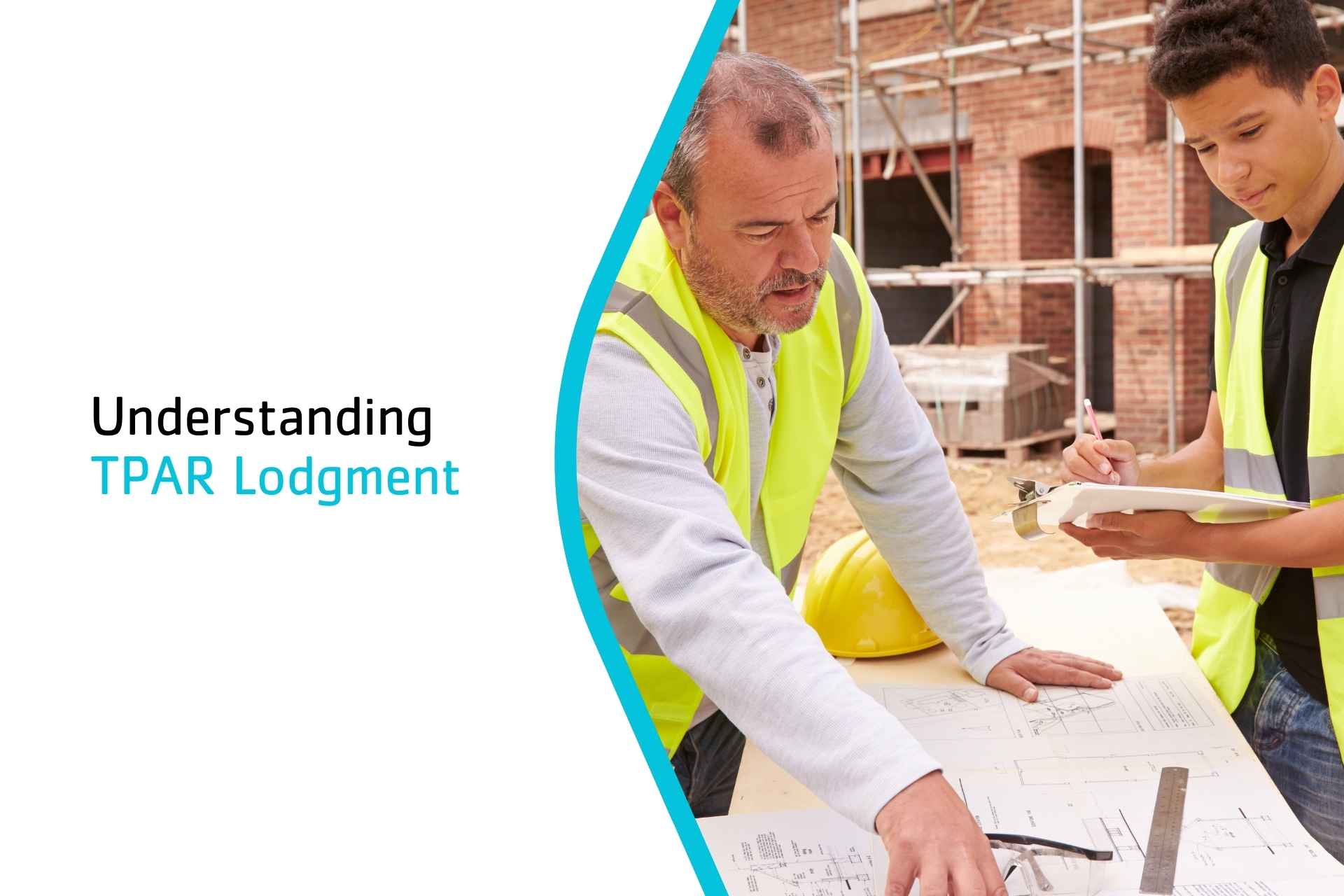Imagine running a successful business, focusing on growth and profitability, only to be hit with a hefty fine for not lodging your TPAR on time. Last year, the ATO issued approximately $18 million in penalties to more than 11,000 businesses for failing to comply with their TPAR obligations. Understanding TPAR (Taxable Payments Annual Report) lodgment is crucial for compliance and avoiding penalties. This blog will guide you through everything you need to know about TPAR, from identifying reportable payments to ensuring timely lodgment.
Table of Contents
What is Taxable Payments Annual Report (TPAR)?
The Taxable Payments Annual Report (TPAR) is an essential lodgment required by the ATO. It mandates certain businesses to report payments made to contractors for providing services. Initially introduced for the building and construction industry, TPAR has since expanded to other sectors including cleaning, courier, road freight, IT, and security, investigation, or surveillance services.
Why TPAR Matters
TPAR helps the ATO ensure that contractors comply with their tax obligations. By tracking payments made to contractors, the ATO can identify and address instances of non-compliance such as underreporting income or not meeting GST obligations. Compliance with TPAR lodgment helps create a fairer business environment by ensuring everyone pays their fair share of taxes.
Who Needs to Lodge a TPAR?
The services that come under the Taxable Payment Reporting System (TPRS) are:
- Building and Construction
- Cleaning
- Courier and Road Freight
- Information Technology (IT)
- Security, Investigation or Surveillance
If your business operates in these industries and you hire contractors to fulfil these services, you may need to lodge a Taxable Payments Annual Report (TPAR).
Businesses in these industries are required to lodge a TPAR if they derive at least 10% of their total income from these services. If your business offers multiple services under the Taxable Payments Reporting System (TPRS), you should combine the payments received for these services to determine if they exceed the 10% threshold.
It’s important to note that building and construction businesses have a different threshold. They are only required to lodge a TPAR if 50% or more of their business income is earned from providing building and construction services.
Examples:
- A logistics company offers both courier and road freight services. In the financial year, they received $300,000 for courier services and $400,000 for road freight services, totalling $700,000 from TPRS services. Their total business income was $5,000,000 for the year. Therefore, the percentage of income from TPRS services is ($700,000 / $5,000,000) * 100 = 14%. Since this exceeds the 10% threshold, they are required to lodge a TPAR.
- A security company provides a monitoring and response service. In the financial year, they received $650,000 for these services. Their total business income was $2,000,000 for the year. Therefore, the percentage of income from TPRS services is ($650,000 / $2,000,000) * 100 = 32.5%. Since this exceeds the 10% threshold, they are required to lodge a TPAR.
Understanding these criteria helps ensure compliance with TPAR requirements and avoids potential penalties for non-compliance.
Exclusions from TPAR Reporting
When preparing your Taxable Payments Annual Report (TPAR), certain payments are exempt from reporting. Understanding these exclusions can simplify your reporting process and ensure compliance with ATO guidelines. Here are the key exclusions to note:
Materials-Only Payments
Payments exclusively for materials, without any associated labour costs, do not require reporting in TPAR.
Incidental Labour
Labour costs that are incidental to material purchases and constitute a minor part of the total invoice do not need to be reported in TPAR.
For example: When John purchases construction materials from a supplier and a small labour fee is included for assembly guidance, this incidental labour cost is exempt from TPAR reporting.
Outstanding Invoices After June 30
Report only payments made on or before June 30 each year, excluding any outstanding invoices beyond this date.
Labour Hire Arrangements
Payments to workers engaged under labour hire or on-hire arrangements, including labour-hire firms providing services, are not required to be reported in TPAR.
PAYG Withholding Payments
Payments subject to PAYG withholding, such as payments to employees, should be reported through the appropriate PAYG channels, not in TPAR.
Payments to Foreign Residents
Payments to foreign residents for work in Australia subject to PAYG foreign resident withholding should be reported through the appropriate channels. Report such payments in TPAR only if they are not subject to PAYG withholding.
Contractors Without an ABN
Payments made to contractors who do not provide an Australian business number (ABN) are exempt from TPAR reporting.
Payments Within Consolidated Groups
Payments within consolidated or multiple-entry consolidated groups for income tax purposes do not need to be reported in TPAR. Only report payments to contractors for services outside the consolidated group.
Private and Domestic Projects
Payments made for private and domestic projects, such as personal home renovations or private cleaning services, are not reportable in TPAR.
For example: Sarah manages the renovation of her family home and makes payments directly to contractors. Since these payments are for personal use, they are not required to be reported in TPAR.
Mixed Personal and Business Payments
Payments made for personal purposes unrelated to business activities do not require reporting in TPAR.
For example: Emma, a sole trader operating a cleaning business, engages contractors for both business-related cleaning services and personal home cleaning. Payments for personal home cleaning, unrelated to business activities, are excluded from TPAR reporting.
Key Components of TPAR Lodgment
Identifying Reportable Payments
Reportable payments include the total amount paid to each contractor during the financial year for providing services. This does not include payments for materials only or payments to employees.
Collecting Contractor Information
You’ll need the contractor’s ABN, name, address and the total amount paid for their services. Ensuring accurate and complete information is crucial for a correct lodgment.
Lodging the Report
TPAR can be lodged online through the ATO’s Business Portal, Standard Business Reporting (SBR) software or through a registered tax or BAS agent.
Example of a Reportable Payment: If your IT company paid a contractor $50,000 for software development services, this amount needs to be included in your TPAR.
Deadlines and Penalties
The TPAR is due by the 28th of August each year, covering payments made in the previous financial year. Failure to lodge the TPAR by the due date can result in penalties, which increase with the length of the delay.
Penalties for Late Lodgment: Penalties can start from a few hundred dollars and increase significantly for prolonged delays. Staying on top of deadlines is crucial to avoid these costs.
Best Practices for TPAR Lodgment
Accurate Record-Keeping
Maintain detailed records of all payments to contractors throughout the year. This includes invoices, payment receipts, and contracts. Accurate record-keeping ensures that you have all the necessary information when it’s time to lodge your TPAR.
Using Accounting Software
Modern accounting software can simplify the process by tracking payments and generating TPAR reports automatically. This reduces the risk of errors and makes the lodgment process more efficient.
Regular Audits
Conduct regular audits to ensure that all contractor payments are accurately recorded and reported. Regular audits help catch any discrepancies early and ensure compliance with ATO requirements.
Tip: Set up reminders and alerts in your accounting software to keep track of TPAR-related tasks and deadlines.
Simplify Your TPAR Lodgment Process
Navigating the TPAR lodgment process can be challenging, but there are experts who can help. Professional bookkeepers and accountants offer valuable assistance to ensure your business meets its TPAR obligations accurately and on time. Here’s how they can assist:
- Reviewing your business activities to determine if TPAR lodgment is required based on income percentages and industry classifications.
- Collecting and organising all necessary information, including contractor details and reportable payments.
- Ensuring accurate and timely lodgment of your TPAR through the appropriate channels.
- Providing ongoing support and guidance to maintain compliance with ATO requirements.
By leveraging professionals, you can streamline your TPAR lodgment process, reduce the risk of penalties, and focus on growing your business with confidence.
Conclusion
TPAR lodgment is a critical obligation for many Australian businesses. Ensuring compliance not only helps avoid penalties but also promotes fair business practices. By leveraging expert bookkeepers and accountants, businesses can navigate the complexities of TPAR with ease, ensuring accuracy and compliance. Whether you are new to TPAR or seeking to streamline your reporting processes, professional assistance can make all the difference in maintaining a compliant and efficient operation.
Contact us today to learn how our bookkeeping and accounting services can help you manage your TPAR lodgment and other financial obligations efficiently.
Frequently Asked Questions
While you can lodge TPAR yourself, professionals can ensure accuracy and compliance, saving you time and reducing stress.
If you make a mistake, you can lodge an amended report. It’s best to correct errors as soon as they are discovered to avoid penalties.
Businesses in industries covered under the Taxable Payments Reporting System (TPRS) need to lodge a TPAR if they meet the income percentage criteria. For example, building and construction businesses must lodge a TPAR if they earn 50% or more of their income from contractor services.
You need to include the contractor’s ABN, name, address, total amounts paid or credited, and the GST included in the total amount.
The TPAR is due by 28 August each year, covering payments made during the previous financial year.
Failing to lodge a TPAR can result in penalties from the ATO. It’s important to ensure timely and accurate lodgment to avoid these penalties.
For more detailed information on TPAR requirements, you can visit the ATO website. They provide comprehensive guidelines and resources to help businesses understand their obligations. Alternatively, feel free to contact us for further assistance.





















